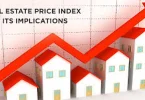The real estate landscape is undergoing major shifts. With rising interest rates, changing demographics, technological advances, sustainability demands, and global economic uncertainty, the latest real estate trends 2026 are pointing to a market that looks quite different than the one just a few years ago.
To navigate this changing terrain—whether you’re buying a home, investing, or developing property—understanding these trends is key.
Why the Latest Real Estate Trends 2026 Are Important

The real‑estate sector doesn’t operate in isolation. It’s influenced by macro‑economics (interest rates, inflation), demographics (aging populations, migration), policy (zoning, sustainability mandates) and technology (data, AI, digitalization).
The industry is in a phase of structural change rather than simply reverting to pre‑pandemic norms. This means strategies that worked in past cycles may not perform the same, and opportunities lie in understanding the new rules of the game.
Top 10 Latest Real Estate Trends 2026
1. Tech, Data & Digitalization at the Core
Technology is no longer an optional add‑on—it’s becoming foundational. The use of AI/machine learning in real estate decision-making has jumped significantly. Applications include predictive analytics for valuation, AI-driven space utilisation, smarter building operations, digital leasing platforms, and tokenization of real estate assets.
What this means: If you’re buying or investing, you’ll benefit from asking: How data-driven is the property’s valuation? How tech-enabled is the asset operation? Are legacy properties likely to fall behind?
2. Sustainability, Climate Risk & Building Resilience
Sustainability isn’t just a “nice-to-have”—it’s increasingly a must-have. Climate risk exposures (flooding, wildfires, heat) are changing investor attitudes. Buildings with green credentials, energy efficiency, and resilience features (e.g., solar installations, flood-resistant design) are gaining favour.
Takeaway: For buyers: look for homes/buildings with sustainable credentials or resilience features. For investors/developers: incorporating green/resilience design is less optional and more required for valuation and risk mitigation.
3. Changing Demand: Demographics, Housing Models & Urban Dynamics
Demographics are shifting: the aging population is creating demand in senior-housing segments. At the same time, younger buyers face high affordability pressure and may favour alternate housing models like co-living, flexible spaces, or build-to-rent developments. Urban-to-suburban and second-tier city moves continue due to remote or hybrid work trends.
Implication: Homes and projects will need to adapt: flexible layouts, multi-generational housing, amenities for an aging population, and location strategies beyond major metros.
4. Affordability Pressures & Shift in What Buyers Prioritise
Affordability remains a major driver. Many potential homeowners are delaying purchases or modifying expectations. Investors and developers are refocusing on mid-market housing, rental-centric models, and underserved segments rather than luxury or speculative builds.
Advice: If you’re buying, widen your location or product search. If investing, mid-market and rental models may offer stronger fundamentals than chasing ultra-premium properties.
You may also like it:
Housing Market Trends and Updates: 2026 Insights
First Time Home Buyer Guide | Step-by-Step Buying Tips
Steps to Buy Your First Dream Home | Complete Guide
5. Supply Constraints & Shift in Investment Sectors
In some sectors, new supply is constrained. Data centres, senior housing, and certain niche developments are in high demand but limited supply.
Takeaway: For investors, diversifying into alternative real estate assets is wise. For developers, delivering in well-positioned segments offers value creation.
6. Regional Divergence & Selective Market Performance

The market isn’t moving uniformly. Some cities and regions are growing, while others lag. Location, asset quality, functionality, and sector matter more than ever.
Advice: Deeply research your specific market (city, neighbourhood, building type) rather than relying on national or global trends.
7. Looking Beyond Traditional Residential: Mixed Models & Multifunctionality
Hybrid or mixed-use models are increasingly popular: live/work spaces, build-to-rent, co-living, flexible offices, and adaptable commercial/residential spaces. Niche sectors like senior housing or logistics are gaining mainstream attention.
Implication: Buyers should consider flexibility in use (rental potential, remote work). Investors and developers should focus on multifunctionality to maintain resilience.
8. Operations, Experience & Value Add-Over Finish
Operational quality, tenant/occupier experience, building efficiency, and adaptability are becoming differentiators. A well-built property alone is no longer enough; superior management and adaptability drive long-term value.
What this means: Investors and developers must maintain and upgrade properties continuously to remain competitive.
9. Capital Markets, Risk Aversion & Infrastructure Competition
Real estate investment now competes with other asset classes. Higher financing costs and uncertainty are making investors more selective and risk-aware. Debt capital is often preferred over equity in specific sectors.
Advice: If investing, analyse financing, leverage risk, liquidity, and alternative uses. Buyers should consider long-term holding costs, not just the purchase price.
10. Ongoing Impact of Remote Work & Lifestyle Change
Remote and hybrid work trends are here to stay. Demand for home offices, connectivity, suburban space, and flexible layouts continues to shape real estate. Some commercial office properties are adjusting to new usage patterns.
Implication: Buyers should prioritise properties with flexible space, strong connectivity, and nearby amenities. Developers and investors should consider adaptability in residential and office spaces.
What This Means for Buyers, Sellers, Investors & Developers
For Homebuyers:
- Focus on properties that align with tech, sustainability, and flexible layouts.
- Don’t assume rapid appreciation; evaluate fundamentals of local areas.
- Consider long-term holding costs, maintenance, and taxes.
For Sellers/Developers:
- Deliver buildings that are efficient, tech-enabled, green, and adaptable.
- Reposition older assets by retrofitting for efficiency or new uses.
For Investors:
- Diversify into alternative assets like data centers, senior housing, and build-to-rent.
- Assess local market conditions, regulatory risk, and tenant demand.
- Leverage data-driven insights for informed decisions.
Final Thoughts
The latest real estate trends 2026 reveal a market that is evolving, nuanced, and opportunity-rich for those who adapt. Success—whether buying a home, investing, or developing property—will favor those who understand technology, sustainability, flexibility, and local dynamics. Aligning your strategy with these trends is essential to thrive in the coming years.
FAQs
Q1: What are the latest real estate trends in 2026?
A1: The latest real estate trends 2026 include technology integration, sustainability, flexible housing models, remote work influence, affordability shifts, and alternative investment sectors.
Q2: How is technology affecting real estate in 2026?
A2: AI, virtual tours, digital leasing, predictive analytics, and blockchain-based property transactions are transforming buying, selling, and property management.
Q3: Why is sustainability important in real estate trends 2026?
A3: Energy-efficient buildings, green construction, and climate-resilient features are in high demand, improving property value and meeting regulatory requirements.
Q4: What housing models are gaining popularity in 2026?
A4: Build-to-rent communities, co-living spaces, flexible layouts, and mixed-use developments are increasingly preferred by buyers and renters.
Q5: How are demographics influencing real estate trends?
A5: Aging populations increase demand for senior housing, while younger buyers seek affordability, suburban locations, and flexible living options.






